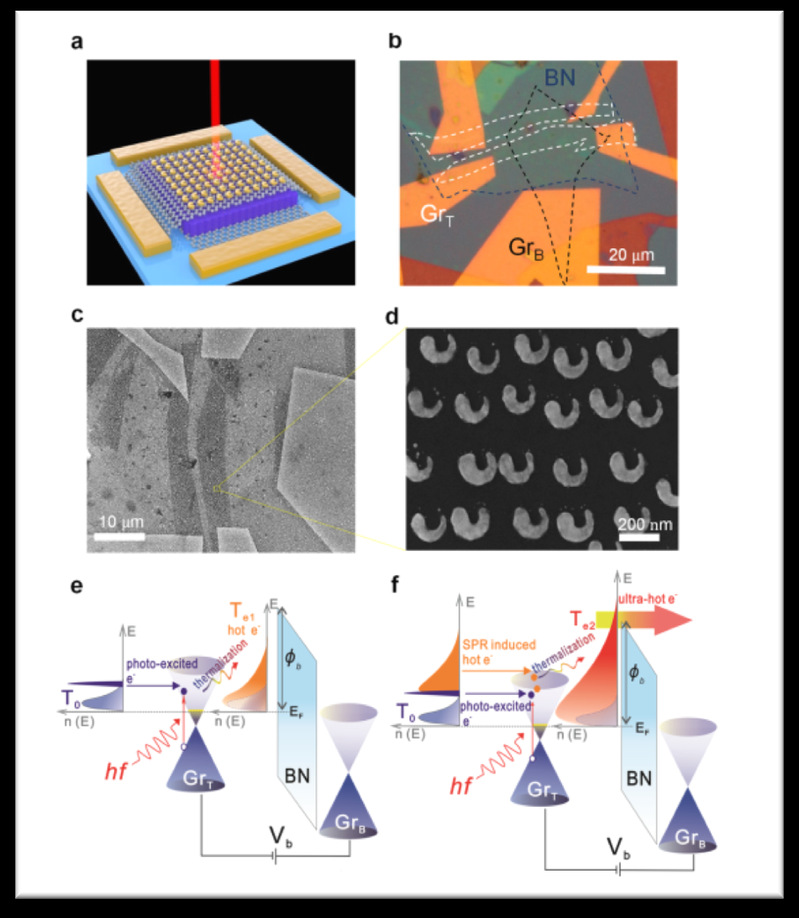Non-equilibrium hot electrons have high energy and momentum, ultra-fast speed, high activity, etc., so they have great application prospects in high-speed devices, photoelectric detection, energy conversion and so on.However, due to its rapid cooling process and short life, the utilization of hot electrons is currently inefficient.In addition, the relevant physical mechanisms of thermal electrons are yet to be further studied.

Recently, Wang Xiaomu's research group of the School of Electronic Science and Engineering, Nanjing University, and Xu Yang's research group of the School of Microelectronics, Zhejiang University collaborated to generate "Ultrahot electrons", whose temperature is much higher than lattice and equilibrium cold electrons. This "Ultrahot electrons" can achieve a breakthrough in the wavelength threshold in the photoelectric effect, that is, absorption and utilization of electromagnetic waves far below the threshold frequency determined by the energy barrier can be achieved.Studies have shown that the use of this ultrahot electron device based on graphene/boron nitride/graphene-based van der Waals vertical heterostructures can achieve near-infrared light at high barriers (about 3.5 eV).Detection and collection of 1550 nm, 0.8 eV).At the same time, the tunneling structure of this high barrier effectively suppresses dark current noise.In addition, the study also saw the negative differential photoreaction in this heterostructure for the first time. This peculiar phenomenon is caused by the complex competition between the thermal emission process, the hot electron cooling process and the tunneling process.
Related results were published on Nano Letters under the topic of Plasmon Excited Ultrahot Carriers and Negative Differential Photoresponse in a Vertical Graphene van der Waals Heterostructure.
This research work not only proposes a method of detecting low-energy long-wavelength photons, enhancing the detector's photoresponse, and suppressing dark current noise. At the same time, the proposed ultrahot electron excited by surface plasmons provides a new idea for the generation, collection and control of non-equilibrium thermoelectrons.
Professor Wang Xiaomu from Nanjing University, Professor Xu Yang from Zhejiang University and Professor Shao Lei from the Chinese University of Hong Kong are the joint communication of this article.The project was completed by Dr. Li Wei (first author) and Liu Wei (second author) of Zhejiang University during the joint training of Professor Wang Xiaomu of Nanjing University.Professor Shao Lei from the Chinese University of Hong Kong has provided great help in the theoretical calculations section.Professor Shi Yi, Prof. Qi Feng, Professor Yu Linwei and Associate Professor Wang Jun transferred from Nanjing University also gave great support and help in this project.
The research was supported by the National Natural Science Foundation, the National Key Research and Development Program, and the Zhejiang Natural Science Foundation and the Chinese Academy of Sciences Strategic Research Program.Special thanks to Zhejiang University Micro-Nano Processing Platform and the State Key Laboratory of Silicon Materials for their support.
